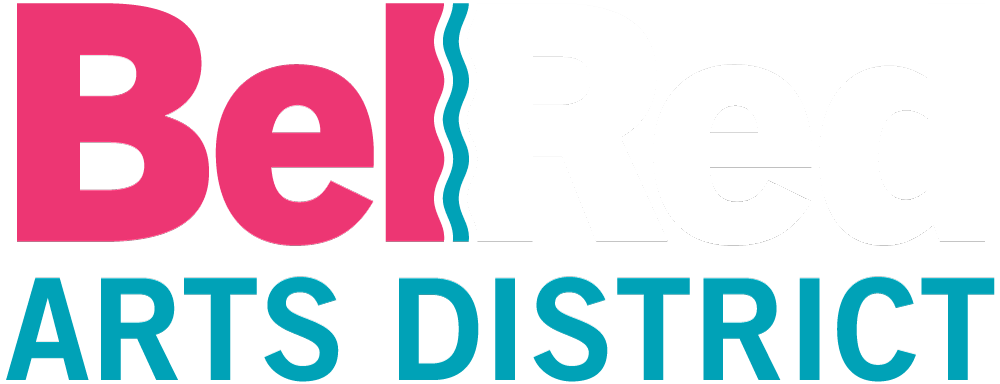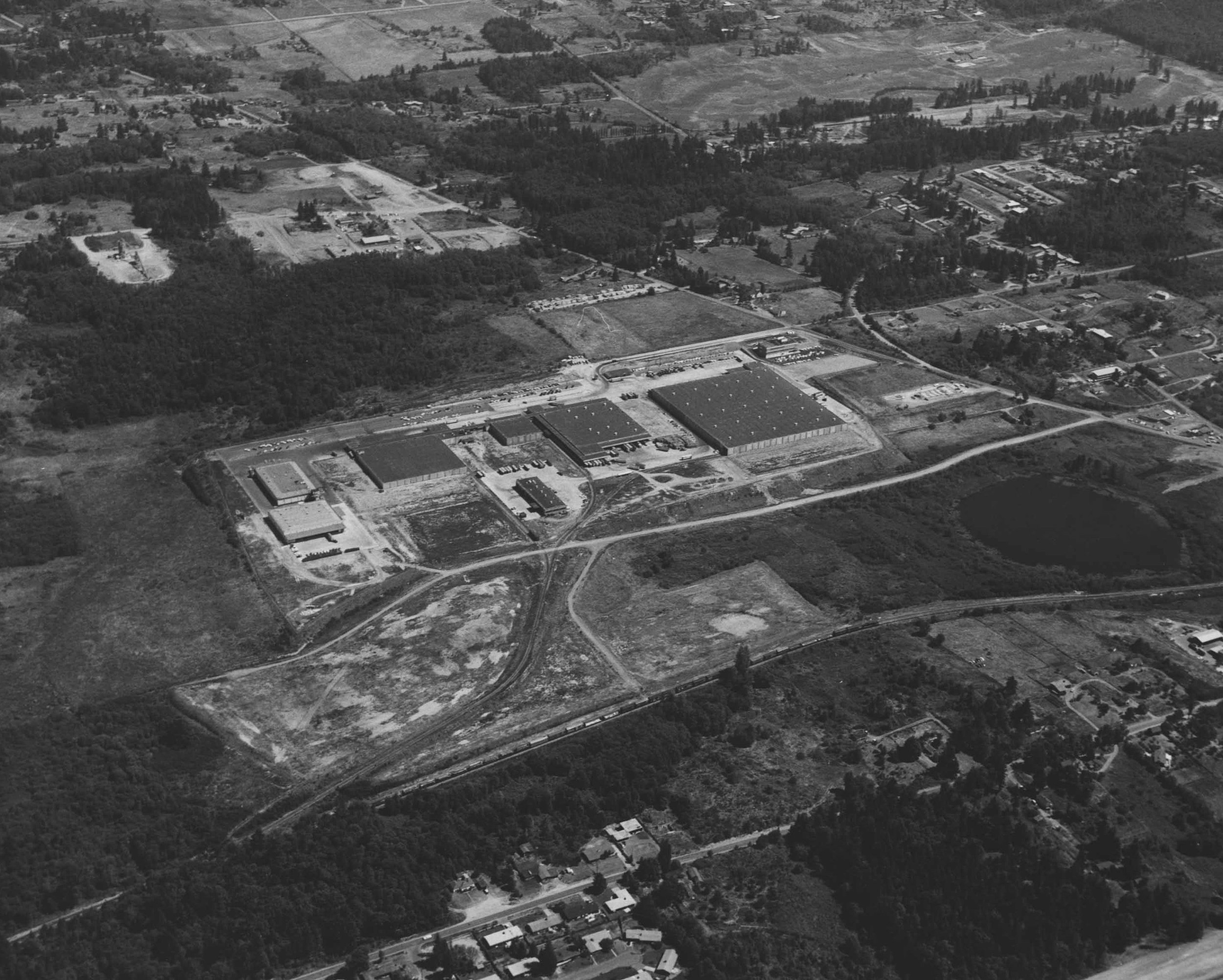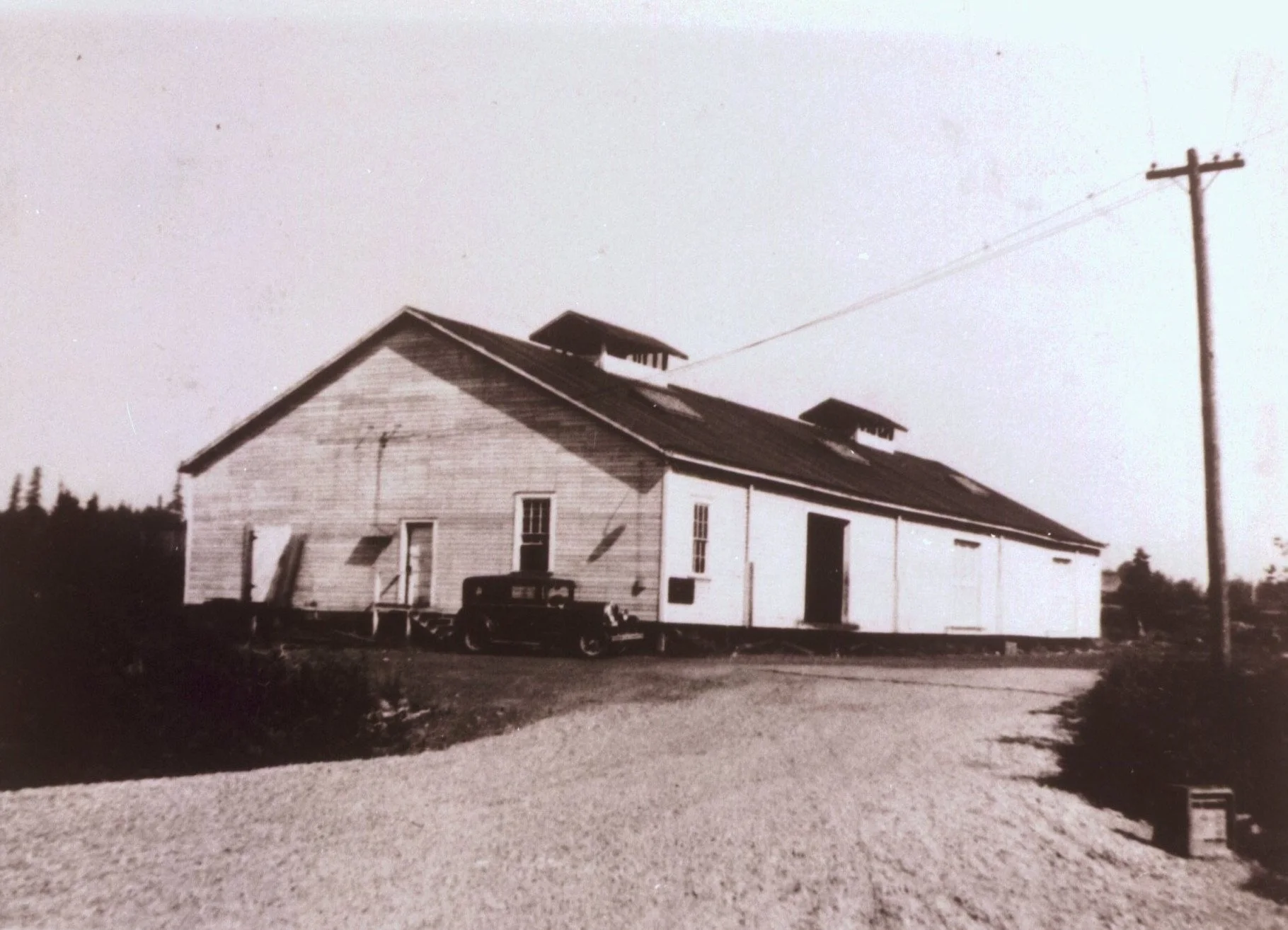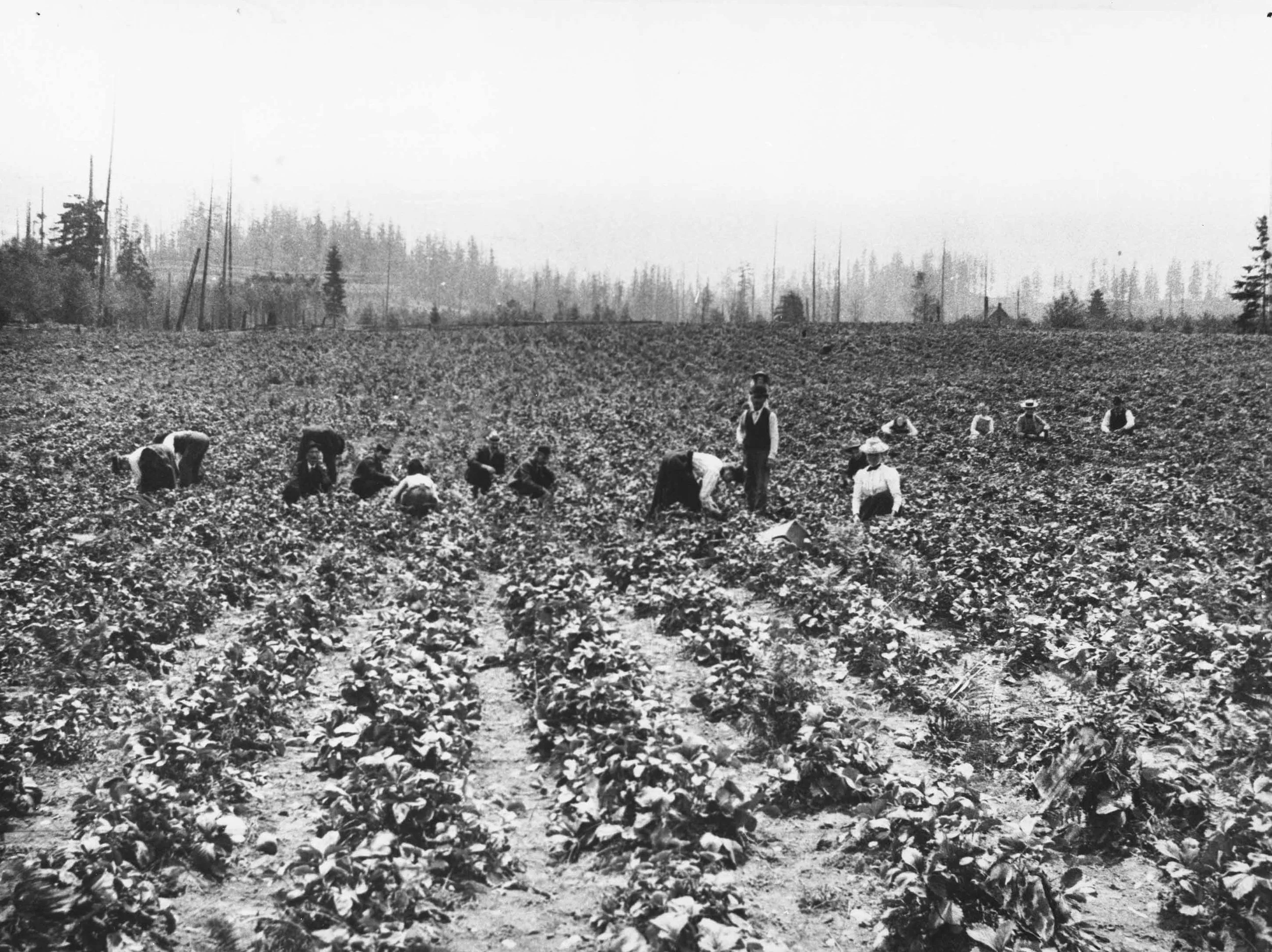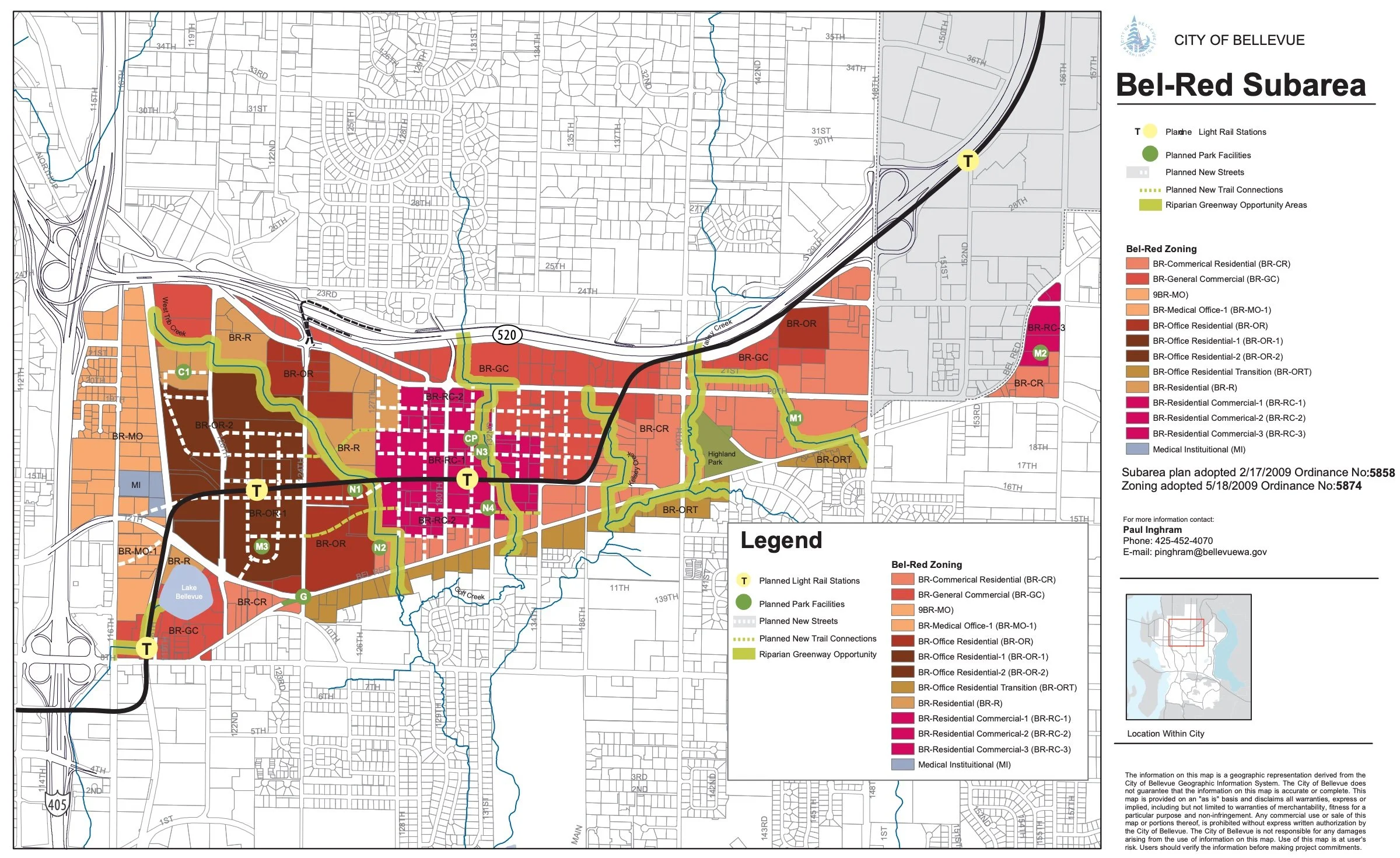
Background, HISTORY & more
Background
Bellevue continues to experience transition with significant growth and changing needs. The BelRed Arts District within Bellevue is a neighborhood identified by the City of Bellevue as a high growth area that will undergo unprecedented transformation affecting the City’s landscape. With the current economic shift and development climate, the community and local businesses in the BelRed are at a pivotal point to grow their critical mass as the creative district transitions into its next stage of development with the upcoming adaptation of Comprehensive Plan 2044 and the anticipated opening of transit as soon as 2024/2025.
The East Link Sound Transit’s fourteen mile extension from Seattle to the Eastside will offer incredible opportunities for the BelRed Arts District to grow and move forward in its next stage of development with greater connectivity throughout the region. The BelRed/130th station is located in the BelRed Arts District near the Pacific Northwest Ballet’s Francia Russell Center at the core of the district and is surrounded by high concentration of arts, culture and creative organizations. Just a stop to the west, the BelRed Arts District will be more connected to its neighbor, The Spring District at their 120th Avenue station and to multiple other stops that run from South Bellevue to Overlake in Redmond.
Many creative and local businesses, artists and organizations may be concerned about rising costs and loss of existing spaces with redevelopment on its way. The area is anticipated to become an urban center with incredible vibrance. Despite the limited awareness and cohesion as a community, there continues to be an impressive number of different arts and cultural organizations that bring large numbers of people together and serve as gathering and third places— all humming with vibrancy and activity. Fortunately, a defining characteristic of this area has been its adaptability, evidenced by artists and cultural organizations who have traditionally repurposed and activated older warehouses and commercial spaces.
While passing through the neighborhood, some visitors may pick up on the subtle clues of the incredible radiance of the vibrant treasures housed in some of the aging structures. These hints are all over the district with the line of cars dropping off young dancers at Pacific Northwest Ballet and Emerald Ballet Theater, people laughing and gathering for a paint and sip experience, or joyful music echoing from the rehearsal studios, piano and drum school. Throughout the district, there is also a growing variety of various scaled public art installations that are accessible and help beautify and connect the built environment.
Courtesy of Eastside Heritage Center
Bellevue’s demographics have evolved over the years and now is a minority-majority city with 40 percent people of color, 42 percent foreign born, and 45 percent speak a language other than English at home. There are over 100 languages spoken in the local Bellevue School District With the changing demographics, it is becoming even more important to recognize, embrace and celebrate diversity and its strength. Diversity is woven into culture. It includes and can extend beyond identities of race, ethnicity, national origin, gender identity, gender expression and presentation, sexual orientation, religion, age, ability and socioeconomic status and more. There has been increased reflection upon the impact of evolving demographics and culture and how it influences the way people connect, build meaningful relationships, heal, celebrate, and inspire. With the ever-changing landscape, it is even more critical to pay attention to the important role that a robust arts and culture district in the BelRed may serve our region to bring communities together.
The upcoming redevelopment will offer transformation opportunities for the BelRed to become a greater regional, dynamic and evolving cultural hub where creativity and innovation drive social and economic vitality. We, the BelRed Arts District Community Alliance, envision a gathering place where nature meets art and communities connect through inclusivity and joyful transformation. We seek to help empower, connect and collaborate with others to build further capacity for the BelRed Arts District to become all it can be.
HISTORY
History in the BelRed is complicated and one that has much cultural and physical transformation. To shed some light, below is an excerpt from the “History of BelRed and The Arts District” section of the City of Bellevue’s BelRed Arts District Implementation Plan (adapted and reprinted with permission from the City of Bellevue).
Courtesy of Eastside Heritage Center
BelRed’s history is important because it not only connects the massive transformation it is experiencing now with a pattern of such transformations in its history, but it also details what many artists are thinking about in their work. Looking at BelRed’s series of transformations from one use to another it becomes clear that these transformations are not just physical but cultural. The question facing BelRed’s cultural and creative community today is how to break the cycle of transformation being a cultural loss for one group by making BelRed’s current transformation into a positive one for all.
Home to the Snoqualmie and Duwamish people thousands of years before the arrival of non-native settlers, the BelRed area was comprised of a series of rich creek ecosystems surrounded by mixed coniferous old growth forests, wetlands and marshes. These natural ecosystems and ancestral homelands were devastated in the early 1800s when the logging industry drove the deforestation of old growth trees throughout the Pacific Northwest.
By the beginning of the 20th century, as a network of farms leased by Japanese American families established themselves, community institutions such as the Bellevue Japanese Clubhouse (a community center also known as the “Kokaido”) and the Bellevue Vegetable Growers Association (which shipped goods by train outside of the Seattle area) became the heart of BelRed’s community. During WWII the Japanese American community was forced to leave their homes and move to incarceration camps. While in the camps most of Bellevue’s Japanese American farmers lost their leased farms and didn’t return to Bellevue or BelRed following their release.
Through the 20th century BelRed emerged as the hub of light industry and low-density commercial services on the Eastside. Since the 1990s, industrial uses in BelRed have declined as several big employers moved out or reduced their operations. Around this time a creative community, many of the arts and cultural uses that can be found in BelRed today, moved in to take advantage of cheap rent and easy access to Kirkland, the rest of Bellevue, and Redmond.
In 2009, BelRed was rezoned from light industrial to a mix of office, residential and commercial zones with an update to the BelRed Land Use Code and BelRed Subarea Plan. In addition to the recognition of the arts as a key element of BelRed’s future, these updates highlighted the need for increased density around the coming light rail stations, walkability, affordable housing and environmental elements such as the daylighting of streams. With the light rail system open in 2023 [See updates from EastLink with anticipated new date to open as soon as Spring 2024/2025], much of BelRed is being rebuilt around the stations. This places BelRed on the verge of another major transformation with high intensity development beginning to reshape the district, slowly transforming it into a new, multicultural, mixed use, transit-oriented community.
Further cementing the importance of the arts in BelRed, in 2020, Bellevue’s Economic Development Plan included a focus on the creative economy, highlighting the establishment of the BelRed Arts District as a key strategy of the city’s economic development.
future potential
With interest from the community stakeholders to encourage vibrancy and to bring to life the full potential of the emerging arts and cultural district, many have been awaiting the right time and circumstances as they have shared visions, hopes, dreams and ideas of what the district means and what it can become.
We are appreciative of the City of Bellevue’s expressed commitment to work towards encouraging the sustainability and vibrancy of arts and culture in the BelRed Arts District, Bellevue and the greater region over the years. There have been various studies, reports, plans, and initiatives -- many of which are available on the city’s website: BelRed Look Back/Look Forward. In late 2022, the City have re-engaged with the community relating to arts and culture and the BelRed Arts District with renewed priority.
As community volunteers of the BelRed Arts District Community Alliance, we are excited to partner together with others to cultivate this emergent district’s great potential. Investing in community and the future of the arts district will bring long term sustainability and cultural diversity in our region and the BelRed Arts District. In addition to the obvious economic benefits that arts and culture bring, perhaps the most impactful is its power to unite diverse communities together, and bring positive change in the world. Recognizing the value and importance of arts and culture can prioritize and protect the fragile creative ecosystem that helps support the health and wellbeing of the community. We welcome and look forward to you joining us!
